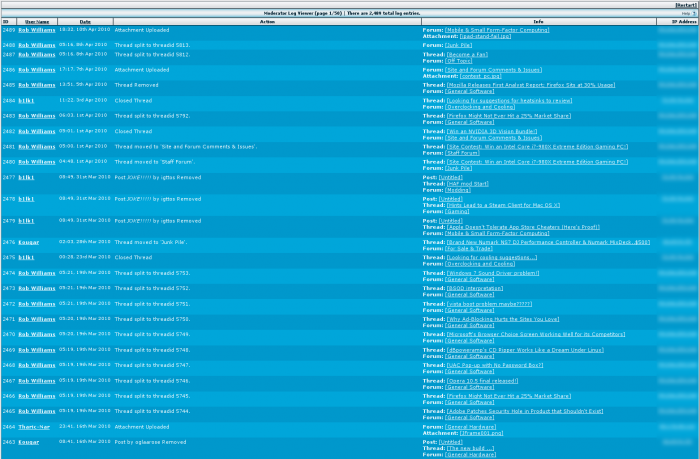Psi*'s #12 post was originally sent as a private message, and I asked him to post it here. You can read it, and Techgage's staff posts in this and other threads, and draw your own conclusions.
Psi* said:
Where is the data that indicates the LGA1156 socket is Intel's mainstream offering? Per a very unscientific "survey" at Newegg, check out the number of reviewers for the 1366 socket (& only the I7-920) versus 1156 socket (all of the CPU variations) .. to save you the time, it is 2,126 vs <1,000.
LGA1156 is Intel's mainstream solution, it's not something we're making up. It's fact. LGA1156 covers the entire current-gen playing field, from the under $100 segment up to the enthusiast $600 segment. LGA1366 on the other hand is 100% part of the enthusiast segment, beginning with $300 and currently going up to $999.
Given that the LGA1366 Core i7-920 was available for a full 10.5 months before even the first LGA1156 hit the scene, it makes sense that it has a staggering number of reviews and the later chips do not. For most people, it was the only true option up until Lynnfield.
Psi* said:
As far as the number of techgage's membership and if the "Site Contest: Win an Intel Core i7-980X Extreme Edition Gaming PC! " is some indication of the following, you have 201 (at the moment) after 2 weeks. Slim pickin's. Just to beat the previous point home, you can some how get enough data to support any of your claims when only a couple of hundred people visit your site in 2 weeks? Right.
It's hugely ironic that you question our methods of calculating various figures, yet at the same time equate the number of entrants to our latest contest as the total number of people who visit our site. Our "10 Things Linux Does Better Than Windows" article, posted on Friday, has to date had 9,171
unique reads. Your numbers are a bit off.
Psi* said:
Isn't thermal throttling a "fail" as far as Dell computers are concerned?
No, I don't consider it a fail, because it's STILL stable. LINPACK-based tests are designed to be more hardcore than most people need it to be, because it stresses a PC in what could be considered a worst-case scenario. This to me is a good thing, because it tells us without a reasonable doubt that if the PC passes a LINPACK test, then it's
stable. Just because the PC throttles with LINPACK, it doesn't mean it will throttle with typical high workloads.
Why do I like running with LINPACK? Because I like confidence, and LINPACK gives me that confidence (cue thumbs-up and super-white teeth smile).
Psi* said:
More reviews of the same old stuff .. yawn ... and this is as creative as he can get?
As I have mentioned before, we put far more of a thought process into our methodologies than most other websites, and we're pleased with what we come up with. There's a point where going too hardcore on certain types of testing is no longer going to interest most people. The majority of our visitors are not hardcore enthusiasts, and they are not going to enjoy exhaustive reviews (nor are those the kinds of heatsink reviews we want to write... again, ROI).
Also, it's not only Bill who comes up with a CPU cooler methodology, the
entire team does. The entire Techgage staff talk on a regular basis and get input from each other before a methodology is ever finalized.
Psi* said:
Then he deletes posts and locks the thread.
Bill absolutely did NOT delete any posts, but he did lock two threads (and it's not meant to be a secret). I have attached the most recent part of our moderator log, stretching back to before Bill even created his original thread. If you can find proof within it that he deleted posts, please feel free to speak up.
Psi* said:
Last, what was it with the ridiculous analogy of a Ferrari in space?
As a reminder, here is a list of two things that our readers don't do:
1) Drive Ferrari's in space.
2) Use their PC outside of a chassis.
Psi* said:
Don't come up with a bunch of made up bull shit. I am sure that I am not the only one that smells it.
I can't exactly apologize for preferring to test via real-world methods in lieu of synthetics.

